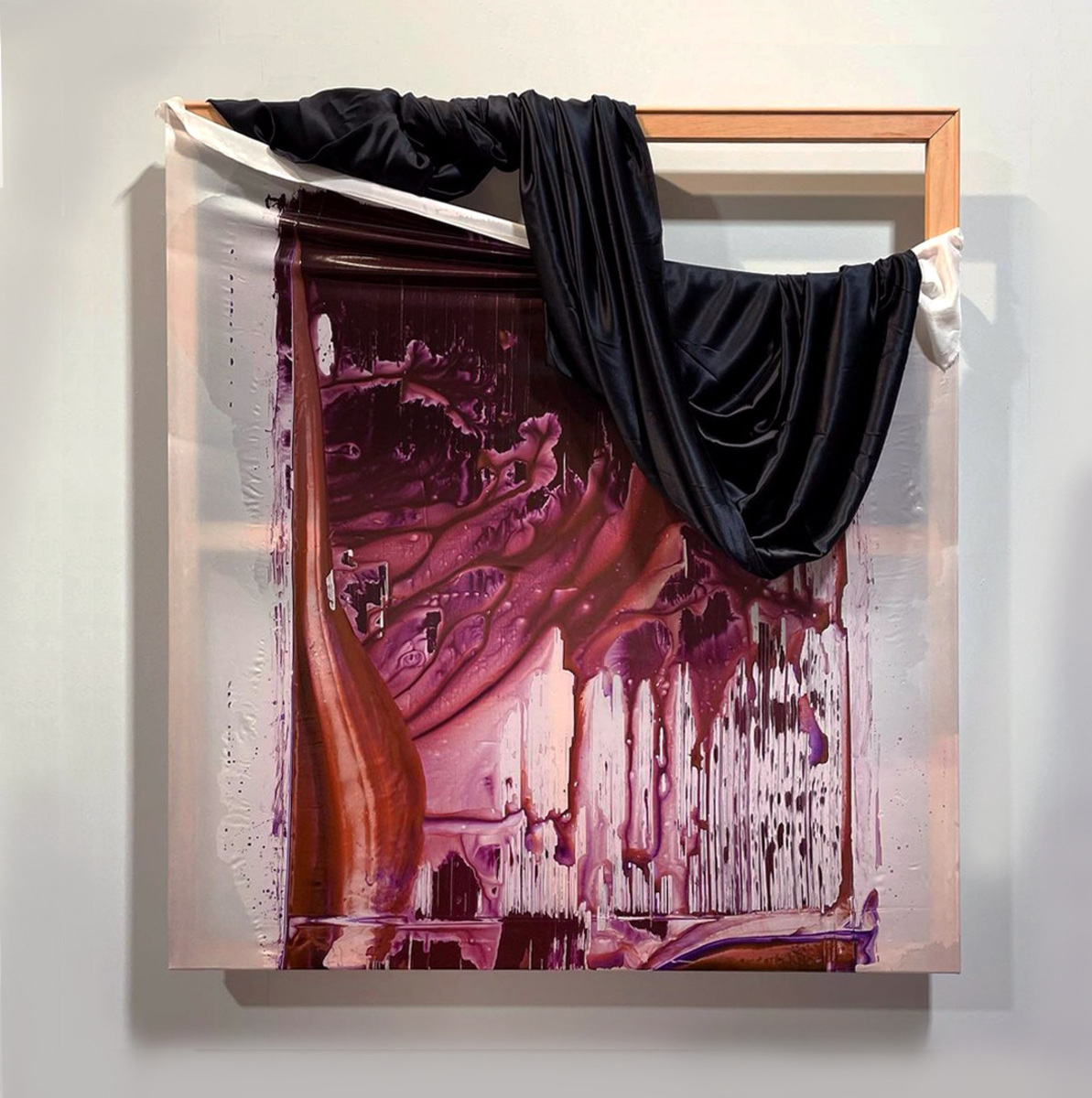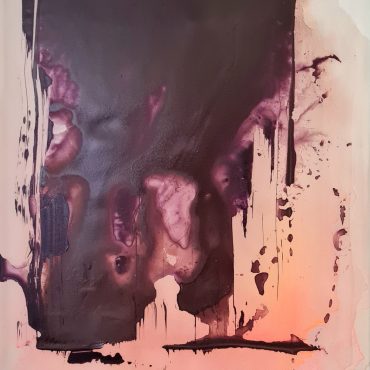Rebecca Wallis’ practice questions the separation created between Self and Other, created by the ego’s desire for order. Her practice reviews the experiences of abjection, jouissance, ‘the uncanny’ and Lacan’s theories of the Real. This is when the order of who we think we are falls away, and suggests that there is something more to the Self than all that we can explain. She asks what happens when the “I” collapses, and when “who I think I am” ruptures. For Wallis, what remains is this strange experience of more. The loosening of order suggests a continuum between the Self and Other.
Wallis makes analogies between the painting and the self, and the painterly and the corporeal.
Her practice loosens the constructed painting object to consider these spaces between Self and Other. Wallis conceives these states as experienced outside of language, that resist meaning and reference the indefinable other aspects of nature. Referring to this continuum, her constructions consider a formal equality where each and every part of the object is visually acknowledged, where the unseen becomes seen. Wallis opens spaces up, allowing her viewers to reconsider the certainty and expectations of the tangible: surface, edges and boundaries. She deconstructs and reforms her silk supports and the ‘traditional’ painted surface, reconfiguring them into something on the precipice – but just outside – of recognition.
Wallis’ practice is about a constructive reviewing, be it an emotional realm, or a reconfiguration of familiar visual signifiers.







